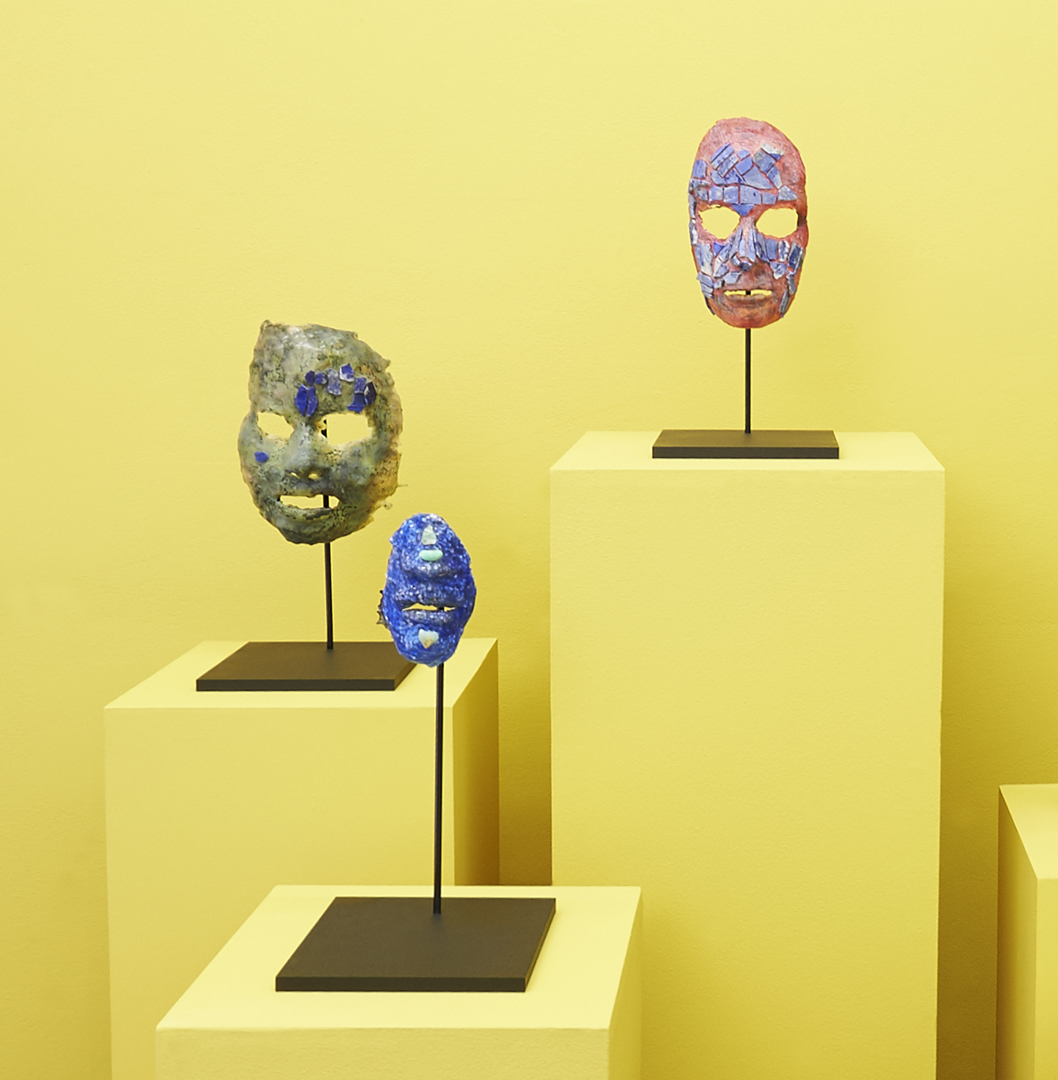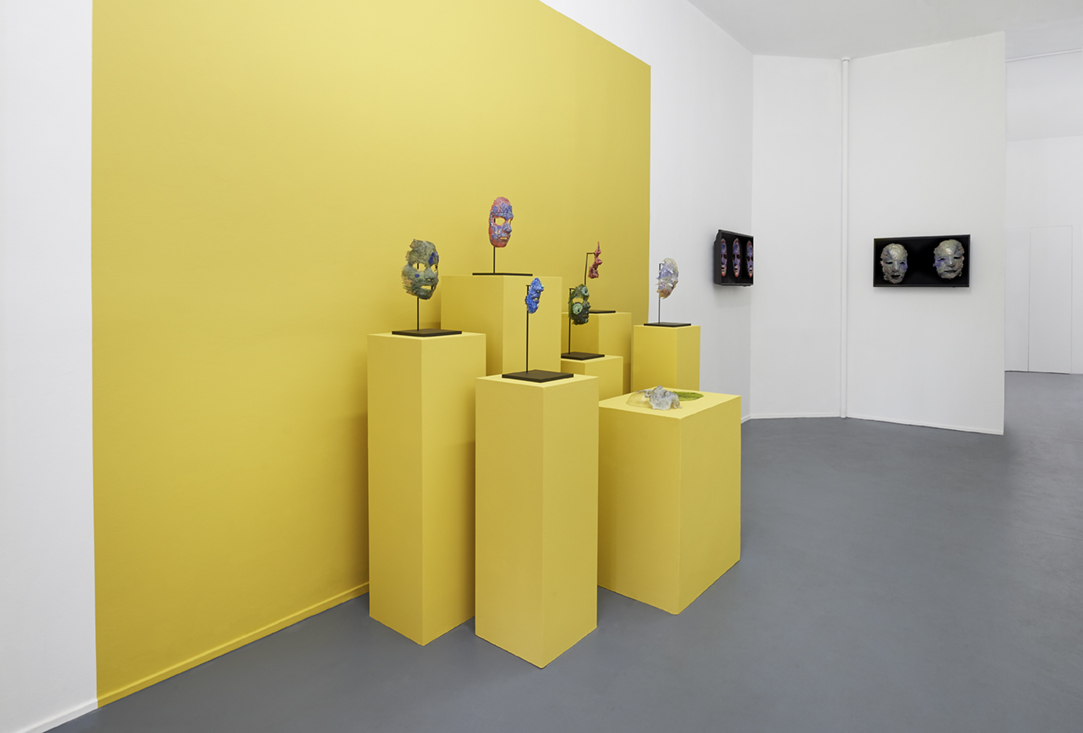KAREN AZOULAY
Semi-PreciousJune 29 - July 28, 2019
Opening Reception: Saturday, June 29, 6-8PM

Essex Flowers is pleased to present Semi-Precious, a solo exhibition by Karen Azoulay.
Semi-Precious is studded with symbolically potent flowers and stones. Azoulay’s creature masks, displayed on pedestals in the exhibition and brought to life in her videos, suggest an animalistic and animistic exploration of our connection to these natural specimens. The chimeric sculptures are encrusted with lapis lazuli, garnets, and raw emerald. Her video, Eating the Flowers, focuses on dental imagery and the act of consuming a pansy, marigold, cornflower and other blooms. These moments of ingestion touch on ideas of nourishment, vulnerability, poison and decay.
Nineteenth century European flower dictionaries pair those flowers with romantic sentiments such as memory, grief and delicacy. Each flower carries a complicated variety of cultural associations. For example, the cornflower is used as a folk medicine to treat fevers. Also known as a bachelor’s button, it was worn in the 1930s secret signal so that Nazis could recognize each other. Tutankhamen’s outer coffin features inlay of turquoise and lapis lazuli. Inside the casket was a linen shroud covered in plant remains. Among the botanical treasures that were found was a dried, but perfectly intact wreath of cornflowers placed at the head of the Pharaoh.
In 2014, a British archaeologist, Dr. Anita Radini discovered flecks of vibrant blue in the teeth of an 11th century skeleton. The fossilized remains were found in the ancient burial grounds of a community of religious women in Germany. The skeleton was identified as a nun and the particles embedded in the plaque of her teeth were curiously verified to be pulverized lapis lazuli. Mined in Afghanistan, the mineral traveled 4,000 miles by foot and horse along the ‘silk roads’ to end up (in this case) in Dalheim, Germany. The rock was worth its weight in gold and known as the finest blue available. It was ground to make the coveted ultramarine pigment, which was used exclusively for painting the most luxurious illuminated manuscripts. Only exceptionally talented and well regarded painters in medieval monasteries had access to the valuable pigment. Most medieval historical records only recognize male artists; yet, most likely, the precious powder ended up in the nun’s teeth by repeatedly putting a paintbrush in her mouth to sharpen the tip while working on precious manuscripts. This archaeological discovery is without precedent and an important addition to current scholarship on the known, yet obscured, contributions women have made throughout art history.
Karen Azoulay is an interdisciplinary artist working within the intersection of sculpture and performance. Her work has been featured in publications such as The New York Times, The New Yorker, C Magazine and Vogue. Recent exhibitions include Root of the Head at Simone DeSousa Gallery in Detroit, Shellwork, a two person show with Amy Brener at Erin Stump Projects in Toronto, and A murky creature casts pennies into the quagmire, a performance staged within Ander Mikalson’s installation at Art in General in New York. Her publication Flowers and their Meanings is a floral dictionary derived from symbolism found in 19th century texts. Karen is a Canadian artist based in Brooklyn.
Eating the Flowers (excerpt) from Karen Azoulay on Vimeo.
Nocturne (excerpt) from Karen Azoulay on Vimeo.












